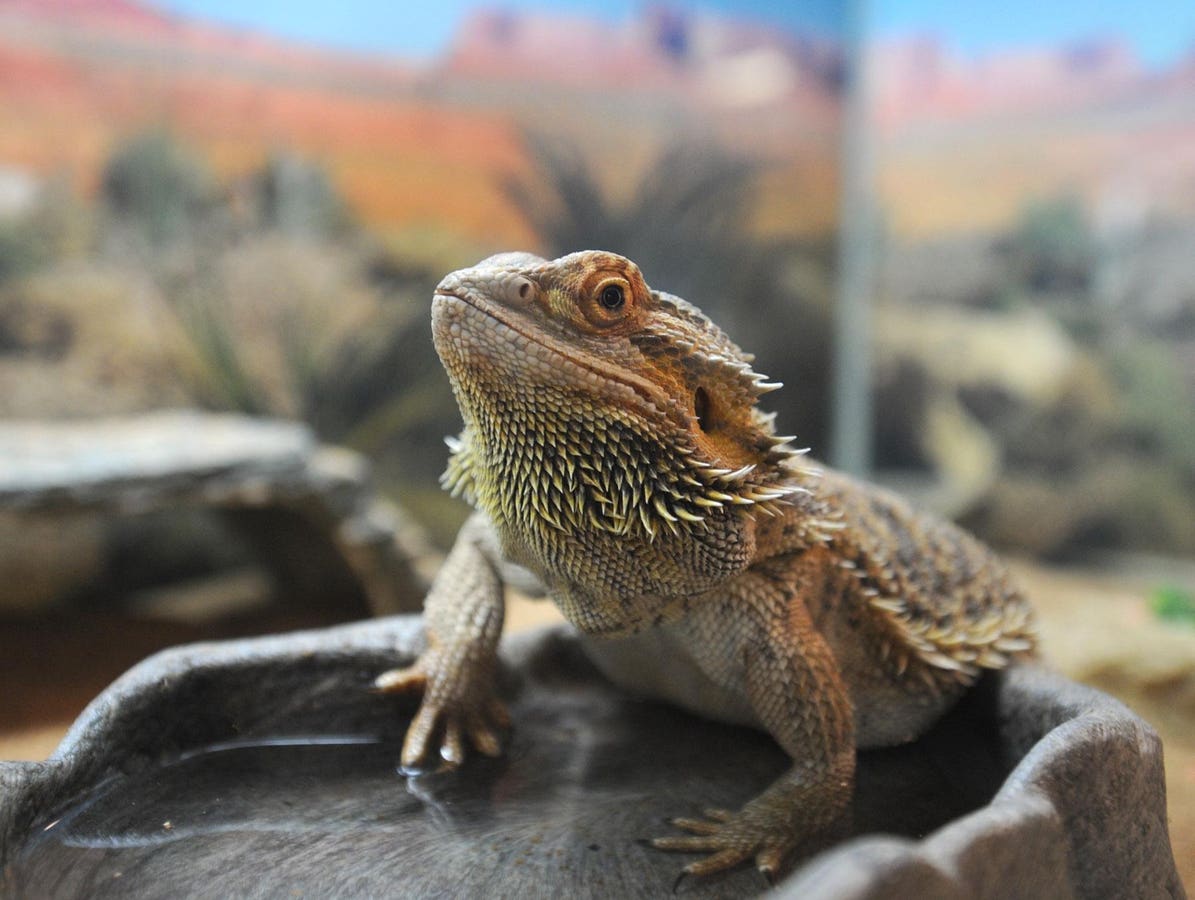A Bearded Dragon sits in a tank at the Ashville Game Farm and Exotic Zoo on Tuesday, July 24, 2012 in Greenwich, N.Y. (Photo by Lori Van Buren/Albany Times Union via Getty Images)
Albany Times Union via Getty Ima
In late 2024, the CDC reported a salmonella outbreak unusual for not being foodborne or linked to a restaurant chain. Instead, the culprit was traced to pet bearded dragons. Now the full details have been reported in the CDC journal Morbidity and Mortality Weekly Report. By the time the investigation closed, 27 people in 14 states were found to have been infected. Most were young children, and half were infants. Ten patients required hospitalization.
The bacterium behind the outbreak, Salmonella enterica Cotham, is a rare strain that almost never shows up in routine surveillance. What’s striking is that when scientists sequenced the bacteria, the genetic fingerprints matched almost perfectly with those from an outbreak tied to bearded dragons a decade earlier. That suggests this rare microbe has been quietly persisting in commercial reptile breeding operations for years.
Probable and confirmed cases of the rare Salmonella enterica Cotham serovar were reported from fourteen states in 2024.
John M. Drake
What is Salmonella Cotham?
Most people think of salmonella as a foodborne illness, the kind behind lettuce recalls or undercooked chicken. But Cotham is different. It’s considered rare, yet it keeps popping up in unexpected places. Beyond the U.S. outbreaks linked to reptiles, Cotham has been detected in a central bearded dragon in a Norwegian zoo, in a bearded dragon and a Hermann’s tortoise in the Czech Republic, and in livestock—poultry and cattle in Nigeria.
Computer image of a Salmonella bacterium.
US Centers for Disease Control and Precention
This patchy distribution is part of what makes Cotham scientifically interesting and epidemiologically concerning. Its ecology isn’t fully understood, but the range of host species suggests that reptiles and perhaps agricultural animals can serve as reservoirs. And although most salmonella infections are treatable, an isolate from the Czech Republic was found to be resistant to tetracycline, a commonly used antibiotic. That kind of resistance raises the stakes when rare serotypes spill into human populations.
What should reptile owners do?
For those who keep bearded dragons or other reptiles, the takeaway isn’t to panic or give up your pets. The CDC’s advice is straightforward:
- Don’t let reptiles roam freely in your home, especially near infants or in food preparation areas.
- Keep reptile equipment and supplies separate from those used for babies or cooking.
- Wash hands thoroughly after handling reptiles, and change clothes before picking up a child.
- Never clean reptile cages or bowls in the kitchen sink.
One of the more sobering lessons from this outbreak is that many infants who fell ill never touched the animals. Instead, the bacteria traveled indirectly—from a parent’s hands or clothing, or from surfaces in the home. That subtlety makes vigilance even more important.
Why this matters
As someone who has spent a career studying infectious diseases, I see this outbreak as a case study in how easily microorganisms usually associated with animals slip into human populations. Salmonella Cotham is rare, but its persistence across continents—in reptiles, in livestock, even in zoo animals—tells us that it isn’t going away. And when a strain reappears after ten years with essentially the same genetic fingerprint, that’s not an accident. That’s a failure of surveillance and biosecurity.
We should be honest: bearded dragons and other reptiles are undeniably charismatic, which is why they’re popular pets. But from both a public health and an animal welfare perspective, I have mixed feelings about keeping vertebrates in household settings at all. These animals are often bred and transported through global supply chains that are difficult to regulate and stressful for the animals themselves. The persistence of Salmonella Cotham is a symptom of a larger problem: a trade that treats living creatures as commodities, with inadequate regard for either microbial risk or animal well-being.
What needs to change isn’t only how we manage the bacteria, but how we think about the ethics of this industry. If people continue to keep reptiles, the supply chain should meet higher standards of hygiene, testing, and transparency.
If we take One Health seriously, we have to recognize that the next outbreak is not a question of if but when. Salmonella Cotham may be rare, but it has already shown it can persist, spread globally, and resist antibiotics. That makes it a small but telling warning of a larger truth: pathogens don’t care whether they start in a chicken farm, a zoo, or a terrarium. They will exploit whatever ecological niche they can. Our job is to close those gaps before they reach our most vulnerable—especially infants.









